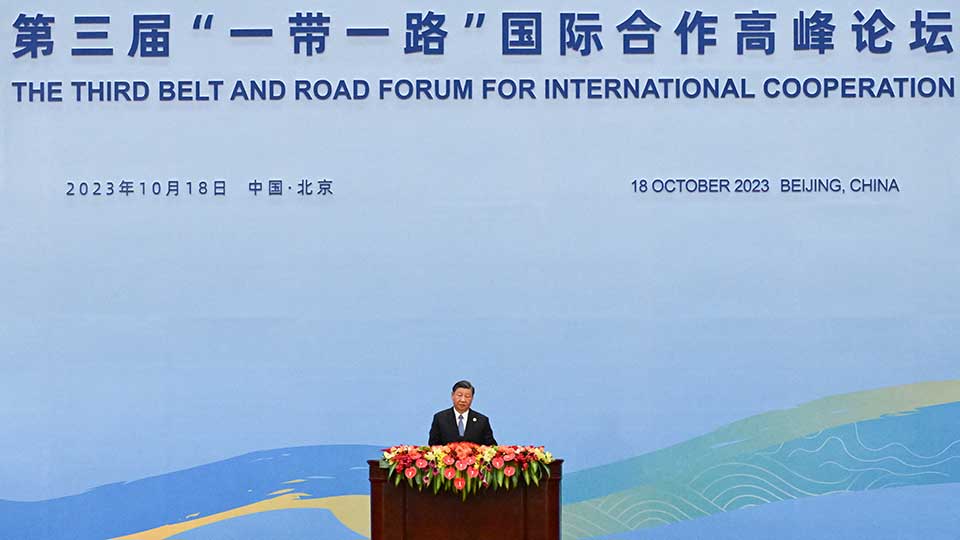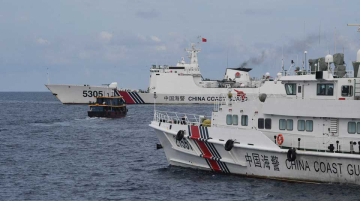
By Giulia Sciorati
The Third Belt and Road Forum, held in Beijing on October 18th, marked a significant moment to evaluate China’s strategies for engaging the Global South. While public discourse has focused on financial commitments and infrastructure projects, the narratives underpinning these initiatives reveal how China positions itself as a global actor.
Two key strategies define China’s foreign engagement: “self-othering” and “neighboring.” These approaches are integral to Beijing’s efforts to balance differentiation with relational proximity to its partners. They are not merely rhetorical tools but central to understanding the dynamics shaping China’s international positioning.
“Self-othering” is evident in how China frames itself as a development partner distinct from both Western powers and local governments. During the rollout of the Belt and Road Initiative in Central Asia, for example, Beijing contrasted its governance model with the socio-economic challenges faced by post-Soviet states, particularly Kazakhstan.
By presenting its system as stable and efficient and unburdened by ideological divides associated with Western-led frameworks, China positioned itself as an aspirational model. This narrative allows Beijing to exert influence without overtly challenging other global powers.
As Beijing deepens its ties with the Global South, storytelling remains its most effective tool to manage perceptions and consolidate its role in the international system.
“Neighboring,” by contrast, builds on shared identities and historical legacies to create a sense of collective destiny. Central Asia, often framed as the “heart of the Silk Road,” exemplifies this strategy. Announced just last year, the Global Civilisation Initiative has sought to reinforce these connections by foregrounding cultural ties and historical narratives. However, such efforts often reflect a Sinocentric perspective, sidelining alternative interpretations and downplaying the realities of historical regional interaction.
These strategies are not confined to Central Asia. In Africa, Latin America, and Southeast Asia, similar patterns emerge. Infrastructure projects, such as railways in Kenya and energy partnerships in Zambia, are accompanied by narratives emphasizing mutual growth and shared historical connections. These stories allow China to present itself as both a partner and a leader, carefully navigating perceptions of benevolence while advancing its strategic interests.
Cultural diplomacy under the BRI is a case in point. Initiatives focused on heritage, such as those in Central Asia, frequently emphasize a shared Silk Road identity to foster goodwill and legitimacy. These narratives align with themes of unity and mutual benefit but often exclude dissenting historical perspectives. By prioritizing economic and cultural ties, China strengthens its appeal while avoiding scrutiny over sensitive issues such as governance practices and sovereignty.
The Third Belt and Road Forum brought these dynamics into focus. Leaders from the Global South reaffirmed partnerships with Beijing, yet the event also underscored tensions within China’s approach. Questions remain about the extent to which China can sustain its image as a “non-imperialist” power as its influence expands. Local reactions, particularly from communities impacted by these initiatives, complicate this narrative further, particularly when projects disrupt local priorities or exacerbate inequalities.
As the global order moves toward multipolarity, these narratives are becoming more than complementary tools: they are essential to China’s broader strategy. Beijing crafts these stories to shape perceptions among partners and competitors alike, embedding itself in a framework that is aimed to redefine international relations.
What distinguishes China’s approach from Western notions of “soft power” is its capacity to adapt its narratives. Whether presenting itself as a peer among developing nations or as an advanced economic power, Beijing tailors its rhetoric to align with the aspirations and priorities of diverse audiences. Analyzing these narratives, therefore, sheds light on how China’s influence is both constructed and contested. As Beijing deepens its ties with the Global South, storytelling remains its most effective tool to manage perceptions and consolidate its role in the international system.
Giulia Sciorati is an LSE Fellow in China and the Global South in the Department of International Relations at LSE.







